ETS Training material
The in-hospital patients are the patients that are already at the hospital (for example a waiting room or examination room in the ED, on surgery or waiting for surgery at the surgery department or at ICU. It is up to the participants in an ETS exercise to decide how to manage those patients.
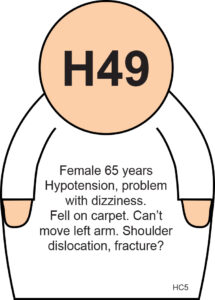
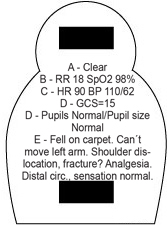
The patients can be evaluated according to surge capacity outcome and can be evaluated with an evaluation template if the decisions made for the patient put them at risk and/or if the hospital resources are overutilized. The in-hospital patients do not have any management card.
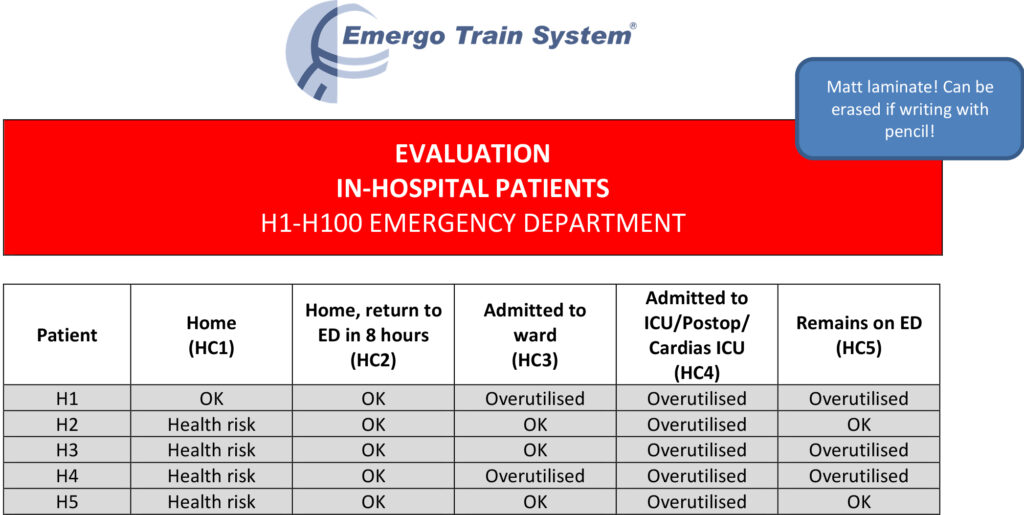
All in-hospital patients ID-number starts with an H to seperate them from the trauma victims.
In-hospital patient bank Emergency department
The in-hospital ED patients are in the Emergency department (or the waiting room) when the exercise starts. If there for example is a large influx of patients from an incident coming, it is to the participants in an ETS exercise to decide how to manage those patients. For example, send home, send to a ward etc.
On the front side is a short health history and anamnesis. The back side of the patients show vital signs, A-E. In the set is also included a template with detailed information to be used by the ETS instructor if the students for example send a patient to the X-ray and need answer of the outcome from the X-ray.
Available in medium 100 patients (H1-H100) and small (H1-H50).
In-hospital patient bank Surgery department
The in-hospital Surgery patients are at the Surgery department when the exercise starts- either in ongoing surgery or waiting for surgery. It is up to the participants in an ETS exercise to decide how to manage those patients; do they need immediate surgery or can they wait 1 hour, 2 hours?
On the front side is a short health history and anamnesis. The back side show what kind of surgery is necessary and surgery time – the time the patient will occupy an operation room. Time in post-op and/or ICU are also shown on the back side.
Available in medium 100 patients (H201-H300) and small (H201-H250).
In-hospital patient bank ICU
The in-hospital ICU patients are in the ICU when the exercise starts. It is up to the participants in an ETS exercise to decide how to manage those patients; do they need to stay at the ICU in a ventilator, can they be moved to a ward to free ventilator beds?
Available in one size of 50 patients (H401-H450).
In-hospital patient bank Ward
The patients are present in the ward when the exercise begins.
The participants in the exercise can assess whether the patients can be discharged home without any new interventions, discharged but in need of home care/home nursing etc, remain or transferred to another ward without special monitoring, or transferred to a ward with special competence such as for example telemetry monitoring, bilevel support etc.
The material includes patients from Medical, Ortopedic, and Surgical wards.
On the front side of the patient, you will find age, gender, reason for admission, and the number of days the patient has been hospitalized.
On the back side, there is information about medical history, ongoing treatment, level of consciousness, and the patient’s mobility status.
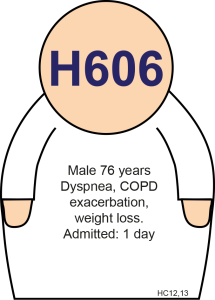
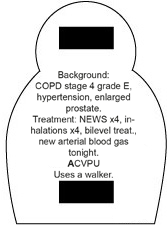
This set differs from other hospital patient banks as it also includes a range of additional materials beyond the patients themselves.
The additional materials included are signs for setting up a hospital ward, staff symbols, symbols for critical resources, and more.
The material also contains a template with detailed information and answers of all ward-patients that can be used by the ETS instructor if participants, for example, ask questions about the latest NEWS, test results, etc.
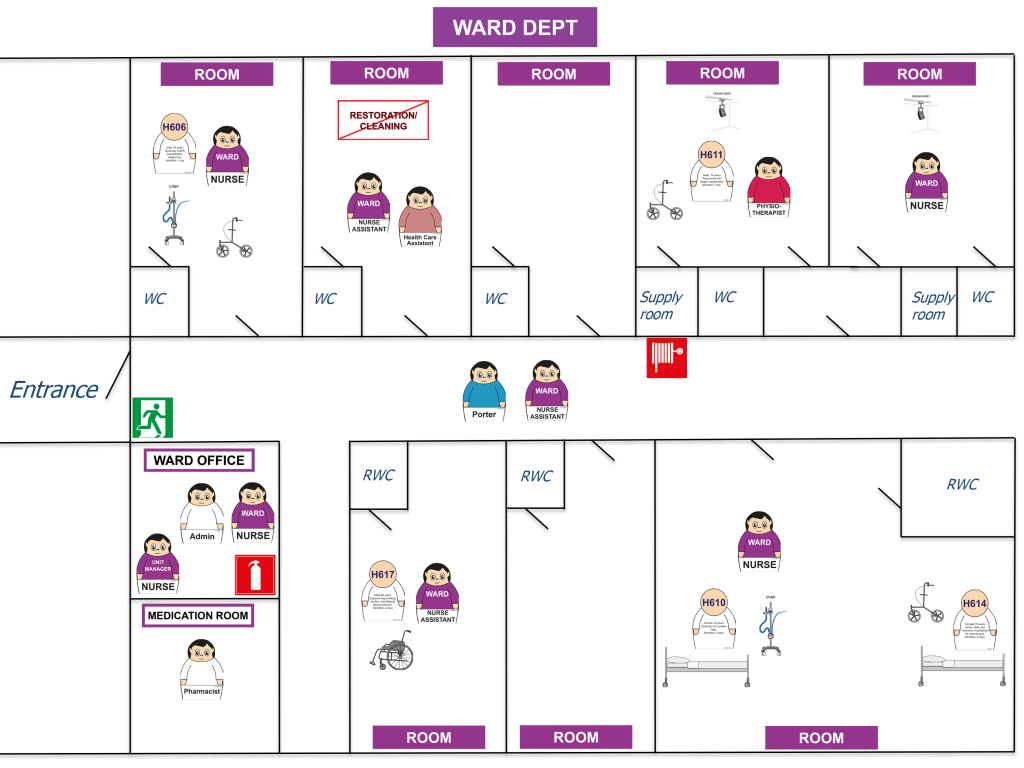
The ETS ward material can be used to:
- Train logistics and free up hospital beds in a patient-safe manner
- Train for hospital evacuation in a short time while maintaining patient safety
- Train on how to organize a ward during a fire
- Train on how to manage a ward with multiple infectious rooms
- Test the hospital’s capacity to handle a major incident
- Evaluate the ward’s surge capacity
Available in medium with 100 patients (H601-H650 Medicine, H701-H725 Ortopedic, H801-H825 Surgical) and small set with 75 patients (H601-H625 Medicine, H701-H725 Ortopedic, H801-H825 Surgical).
